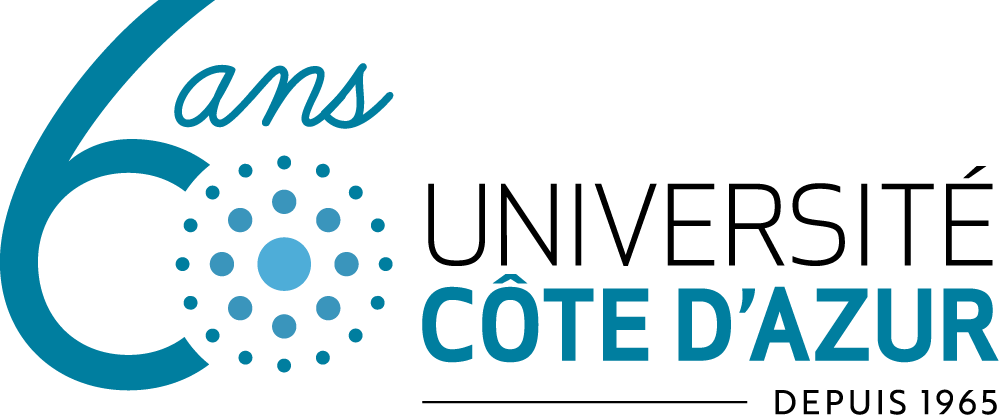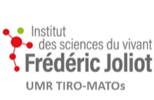Since its creation, the TIRO team has been studying the metabolism of iodine, the thyroid, radiotoxicology, oncology, image processing and post-processing analysis in metabolomics .
Our global strategy consists of bringing together the skills of researchers in different fields, in order to facilitate interdisciplinary and translational studies from a molecular level to clinical applications. Our team includes biochemists, biologists, nuclear physicians and computer scientists.
An important part of our work is also carried out in collaboration with other scientists (biologists, chemists, mathematicians…) and clinicians (pathologists, radiotherapists, surgeons, neurologists…).
The objectives of our work are oriented along four overlapping themes:
- nuclear toxicology, radiotherapy and radiobiology;
- diagnosis and prognosis in oncology (thyroid, breast, lung, etc.) and other pathologies (stroke, COVID, etc.);
- thyroid disruptors, exposome and environmental risk;
- technology and artificial intelligence (AI) in health care.
The MATOs team studies the biological mechanisms linked to alterations in bone tissue during the life of individuals. These mechanisms are notably under the influence of genetic and environmental factors. Bone tissue is made up of three cell types:
- osteoblasts (OB), responsible for the production and mineralization of the bone matrix;
- osteoclasts (OC) which resorb bone matrix;
- osteocytes (OST), derived from OBs, which are considered to be the conductors of bone remodeling.
Our research project is more specifically focused on the cellular (autophagy) and molecular (genetic instability) mechanisms affecting these three types of bone cells in the context of certain pathologies of matrix remodeling (osteoporosis, osteosarcoma, Rothmund-Thomson syndrome), or associated with environmental effects (chemical toxicity of uranium at low doses).
An interdisciplinary project in preclinical e-Health is also continuing.
FIELDS OF RESEARCH
• Physiology of the thyroid and iodine metabolism
• Nuclear medicine, radiotherapy and radiobiology
• Physiopathology of bone remodeling
• Biomineralization of uranium
• Rheumatology
• Cancer stem cells, microenvironment, and osteosarcoma
• Metabolomics, proteomics and radiomics
• Translational studies in cancerology and health
• Radiotoxicology and the exposome
• Preclinical e-health
PUBLICATIONS
• Gritsaenko T, Pierrefite-Carle V, Creff G, Simoneau B, Hagège A, Farlay D, Pagnotta S, Orange F, Jaurand X, Auwer CD, Carle GF, Santucci-Darmanin S. Low doses of uranium and osteoclastic bone resorption: key reciprocal effects evidenced using new in vitro biomimetic models of bone matrix Arch Toxicol. 2021 Mar;95(3):1023-1037.
• L. Suissa, J.-M. Guigonis, F. Graslin, E. Doch, O. Osman, Y. Chau, J. Sedat, S. Lindenthal, Thierry Pourcher*. Metabolome of cerebral thrombi reveals an association between high glycemia at stroke onset and good clinical outcome, Metabolites, 10 (2020) 483.
• F. Castillo-Rivera, A. Ondo-Mendez, J. Guglielmi, J.M. Guigonis, L. Jing, S. Lindenthal, A. Gonzalez, D. Lopez, B. Cambien, T. Pourcher, Tumor microenvironment affects exogenous sodium/iodide symporter expression. Transl Oncol, 14 (2020) 100937.
• M Hichri, G Vassaux, JM Guigonis, T Juhel, F Graslin, J Guglielmi, T Pourcher, B Cambien. Proteomic Analysis of Iodinated Contrast Agent-Induced Perturbation of Thyroid Iodide Uptake. J Clin Med. 23 (2020) 329.
• O. Humbert, D. Chardin, Dissociated Response in Metastatic Cancer: An Atypical Pattern Brought Into the Spotlight With Immunotherapy, Front Oncol, 10 (2020) 566297.
• L. Jing, J.M. Guigonis, D. Borchiellini, M. Durand, T. Pourcher, D. Ambrosetti, Pr PrLC-MS based metabolomic profiling for renal cell carcinoma histologic subtypes. Sci Rep, 9 (2019) 15635.
• Camuzard O, Santucci-Darmanin S, Carle GF, Pierrefite-Carle V. Autophagy in the crosstalk between tumor and microenvironment, Cancer Letters 2020 Oct 10; 490:143-153
• Hurault L, Creff G, Hagège A, Santucci-Darmanin S, Pagnotta S, Farlay D, Den Auwer C, Pierrefite-Carle V, Carle GF. Uranium Effect on Osteocytic Cells In Vitro, Toxicol Sci . 2019 Jul 1;170(1):199-209
Camuzard O, Santucci-Darmanin S, Carle GF, Pierrefite-Carle V. Role of autophagy in osteosarcoma. J Bone Oncol. 2019 Apr 3;16:100235
• Gritsaenko T, Pierrefite-Carle V, Lorivel T, Breuil V, Carle GF, Santucci-Darmanin S. Natural uranium impairs the differentiation and the resorbing function of osteoclasts. Biochim Biophys Acta. 2017 Apr;1861(4):715-726.
• H. Nguyen, V & Diallo, Aliou & Le Thuc, Philippe & Staraj, R & Lanteri, S & F. Carle, GF. (2017). Wireless interrogation of small animal phantoms with a miniature implanted UHF RFID tag. 306-309. 10.1109/CAMA.2017.8273434
• Pierrefite-Carle V, Santucci-Darmanin S, Breuil V, Gritsaenko T, Vidaud C, Creff G, Solari PL, Pagnotta S, Al-Sahlanee R, Auwer CD, Carle GF. Effect of natural uranium on the UMR-106 osteoblastic cell line: impairment of the autophagic process as an underlying mechanism of uranium toxicity. Arch Toxicol. 2017 Apr;91(4):1903-1914.


















